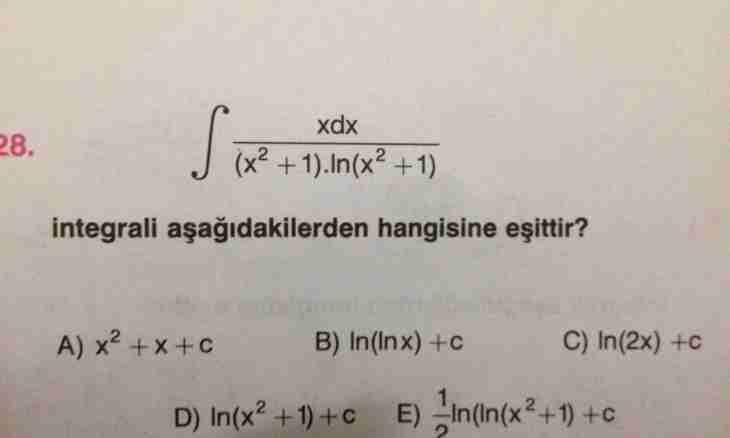The concept of integral is directly connected with a concept of primitive function. In other words, to find integral of the specified function, it is necessary to find such function in relation to which initial will be a derivative.
Instruction
1. The integral belongs to concepts of the mathematical analysis and graphically represents the area of the curvilinear trapezoid limited on abscissa axis to limit points of integration. It is much more difficult to find function integral, than to look for its derivative.
2. There are several methods of calculation of uncertain integral: direct integration, introduction under the sign of differential, a substitution method, integration in parts, Weierstrass's substitution, Newton-Leibniz's theorem, etc.
3. Direct integration assumes reduction by means of simple transformations of initial integral to tabular value. For example: ∫dy / (sin²y·cos²y) = ∫ (cos²y + sin²y) / (sin²y·cos²y) dy = ∫dy/sin²y + ∫dy/cos²y = - ctgy + tgy + C.
4. The introduction method under the sign of differential or replacement of a variable represents statement of a new variable. At the same time the initial integral comes down to new integral which can be transformed to a tabular style by method of direct integration: Let there is an integral of ∫f (y) dy = F(y) + C and some variable v = g(y), then: ∫f(y)dy-> ∫f(v)dv = F(v) + C.
5. It is necessary to remember some simplest substitutions for simplification of work with this method: dy = d (y + b); ydy = 1/2·d (y² + b); sinydy = - d(cozy); cosydy = d(siny).
6. Example: ∫dy / (1 + 4·y²) = ∫dy / (1 + (2·y)²) = [dy-> d(2·y]) = 1/2·∫d (2·y) / (1 + (2·y)²) = 1/2·arctg2·y + C.
7. Integration is in parts made on the following formula: ∫udv = u · v-∫vdu. Example: ∫y · sinydy = [u = y; v = siny] = y · (-cozy) – ∫ (-cozy) dy = - y · cozy + siny + C.
8. A certain integral in most cases is according to Newton-Leibniz's theorem: ∫f(y)dy on an interval [a; b] is equal to F(b) – F(a). Example: Find ∫y · sinydy on an interval [0; 2π]: ∫ y · sinydy = [u = y; v = siny] = y · (-cozy) – ∫ (-cozy) dy = (-2π\· cos2π + sin2π) – (-0·cos0 + sin0) =-2π.

